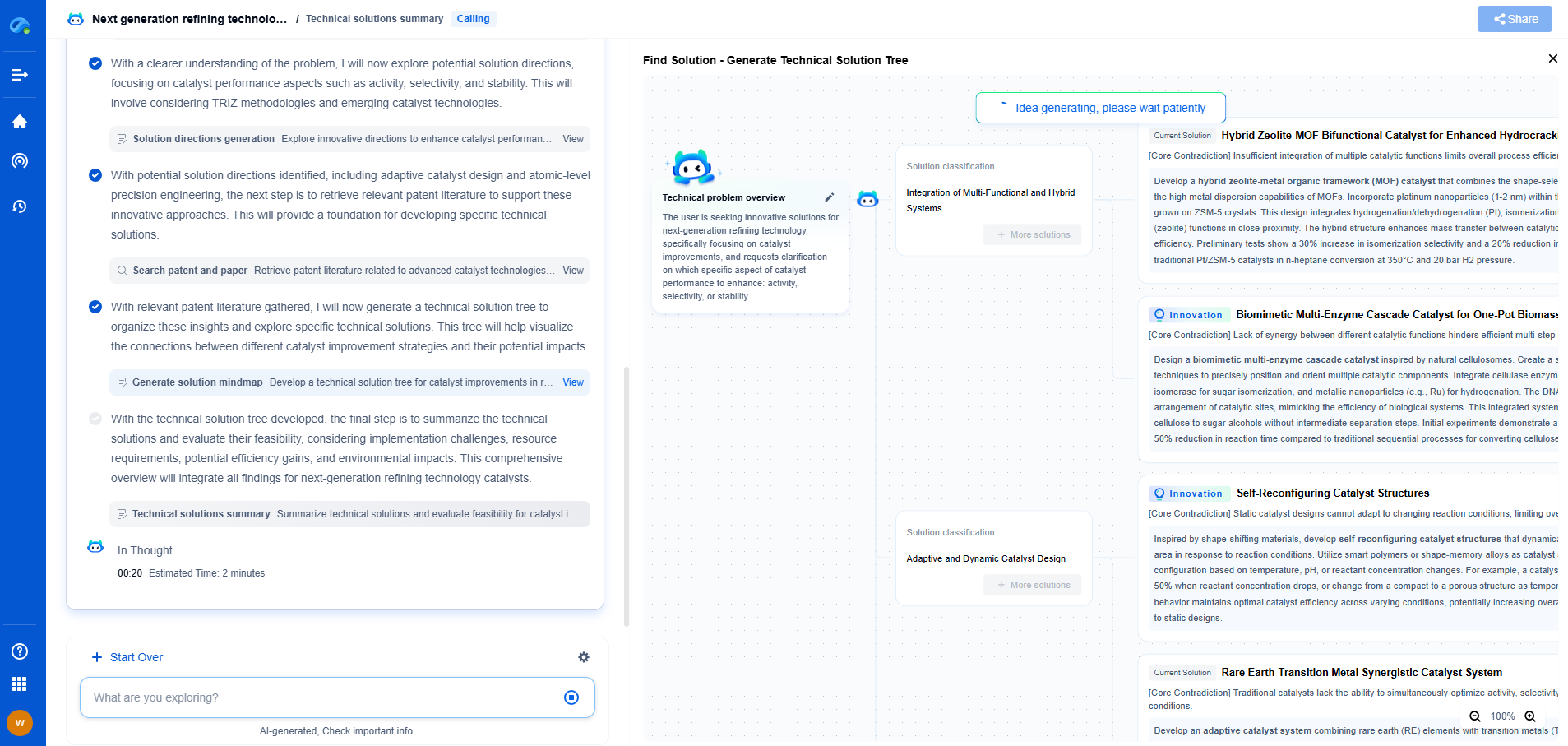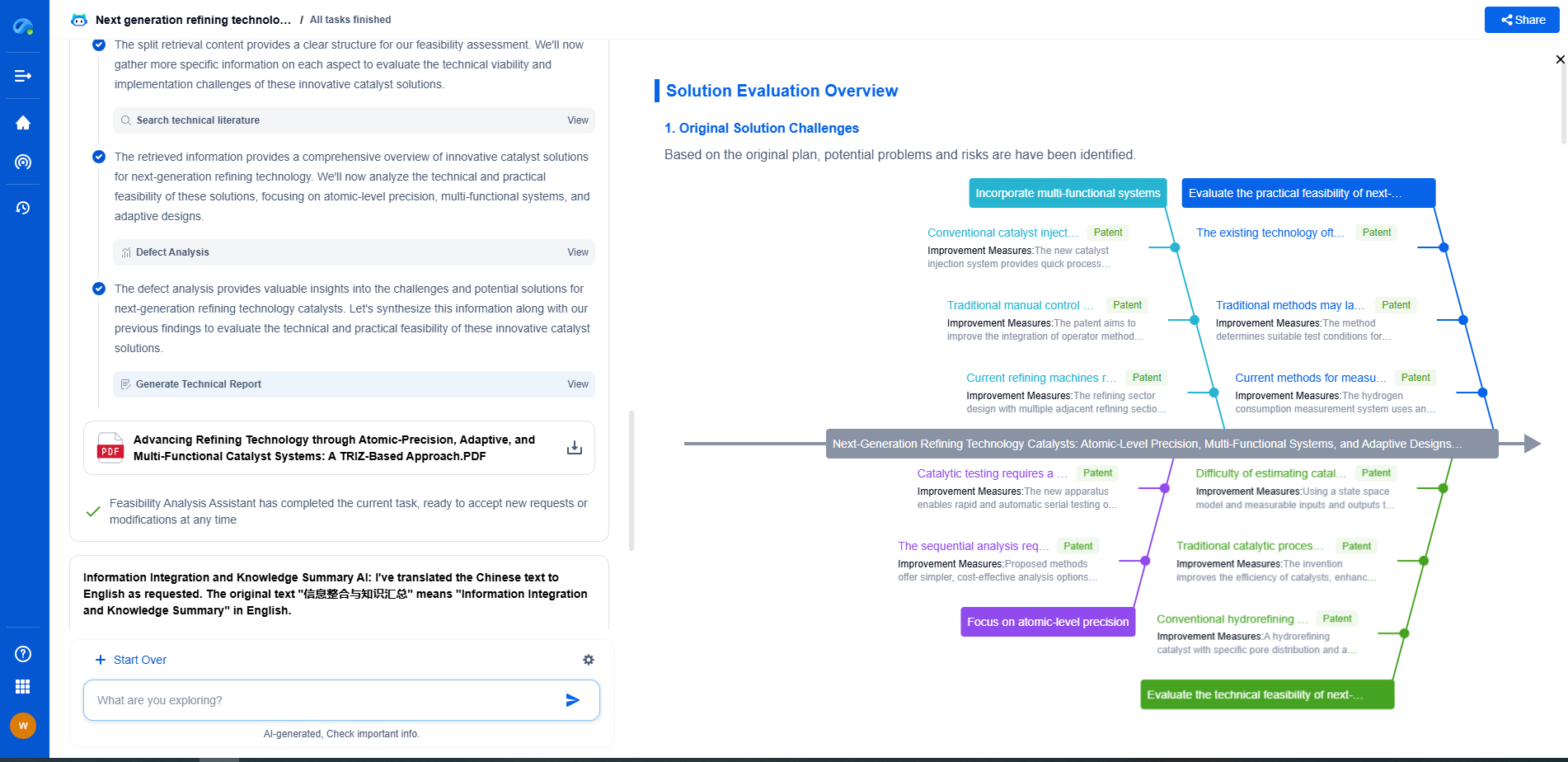How to Measure Ovality and Wall Thickness in Pipelines
JUN 20, 2025 |
Pipelines are critical components in numerous industries, including oil and gas, water distribution, and chemical processing. Ensuring the integrity and reliability of these pipelines is paramount, as even minor defects can lead to significant operational disruptions, environmental hazards, and safety risks. Among the key parameters crucial for pipeline integrity are ovality and wall thickness. This article delves into the significance of these parameters and outlines methods for their accurate measurement.
Understanding Ovality in Pipelines
Ovality refers to the deviation from a perfect circular shape in a pipeline's cross-section. Caused by manufacturing defects, mechanical stresses, or operational conditions, excessive ovality can compromise a pipeline's structural integrity and flow efficiency.
Why Ovality Matters
Ovality affects the internal pressure distribution within a pipeline, potentially leading to stress concentrations that can weaken its structure over time. Moreover, high ovality may impact the flow characteristics, causing turbulence and reduced flow rates, which can affect the overall efficiency of fluid transport.
Measuring Ovality
1. **Mechanical Gauges**: These tools are inserted into the pipeline and physically measure the internal diameter at various points. They are simple, cost-effective, and suitable for accessible pipelines.
2. **Laser Scanning**: This advanced method uses laser beams to create a digital map of the pipeline's internal surface. It offers high precision and is non-intrusive, making it ideal for complex pipeline systems.
3. **Ultrasonic Testing**: Ultrasonic devices can measure wall thickness variations to infer ovality indirectly. This method is effective for assessing both ovality and wall thickness simultaneously.
Wall Thickness: A Critical Parameter
The wall thickness of a pipeline is critical to its ability to withstand internal and external pressures, corrosion, and other environmental factors. Inadequate wall thickness can lead to leaks, ruptures, and catastrophic failures.
Significance of Wall Thickness
A uniform wall thickness ensures that a pipeline can handle its design pressure and environmental loads. Variations in wall thickness can lead to weak points susceptible to corrosion and mechanical damage, compromising pipeline safety and lifespan.
Measuring Wall Thickness
1. **Ultrasonic Thickness Gauging**: This non-destructive method involves sending ultrasonic pulses through a material and measuring the time it takes for the echo to return. It provides accurate measurements without damaging the pipeline.
2. **Radiographic Testing**: This technique uses X-rays or gamma rays to capture images of the pipeline's cross-section, allowing for the identification of wall thickness variations and internal defects.
3. **Magnetic Flux Leakage (MFL)**: MFL tools magnetize the pipeline and detect changes in the magnetic field caused by wall thickness variations and other anomalies. It's widely used for internal inspection.
Best Practices for Accurate Measurement
To ensure reliable measurements of ovality and wall thickness, it is essential to follow certain best practices:
- **Regular Inspection**: Routine inspections help detect and address issues before they escalate. Establish a regular schedule based on the pipeline's operational conditions and risk factors.
- **Calibration**: Ensure all measurement tools are calibrated correctly. Regular calibration checks are crucial for maintaining measurement accuracy.
- **Data Analysis**: Use software tools to analyze measurement data, identify patterns, and predict future issues. This proactive approach can significantly enhance pipeline management.
Conclusion
Measuring ovality and wall thickness is vital for maintaining the safety and efficiency of pipelines. Employing the right techniques and adhering to best practices can help prevent failures, extend the lifespan of pipelines, and ensure compliance with industry standards. By understanding and managing these critical parameters, stakeholders can safeguard their operations and the environment.
Transform the Way You Innovate in Pipeline Technology—with AI-Powered Intelligence
From corrosion-resistant materials to smart monitoring systems and advanced flow control mechanisms, the pipeline industry is undergoing rapid technological transformation. Yet keeping up with evolving engineering solutions, regulatory landscapes, and competitive patents can be a major bottleneck for R&D and IP teams.
Patsnap Eureka is your AI-powered research companion—built specifically for professionals in high-tech and infrastructure domains like pipeline technology. Whether you're designing high-pressure transport systems, assessing trenchless installation innovations, or safeguarding proprietary flow assurance solutions, Eureka provides real-time insights into global patent trends, emerging technologies, and R&D intelligence—all in one intuitive interface.
Empower your team to innovate faster, reduce technical blind spots, and stay ahead of industry shifts. Discover Patsnap Eureka today and bring clarity and confidence to your pipeline technology decisions.
- R&D
- Intellectual Property
- Life Sciences
- Materials
- Tech Scout
- Unparalleled Data Quality
- Higher Quality Content
- 60% Fewer Hallucinations
Browse by: Latest US Patents, China's latest patents, Technical Efficacy Thesaurus, Application Domain, Technology Topic, Popular Technical Reports.
© 2025 PatSnap. All rights reserved.Legal|Privacy policy|Modern Slavery Act Transparency Statement|Sitemap|About US| Contact US: help@patsnap.com

